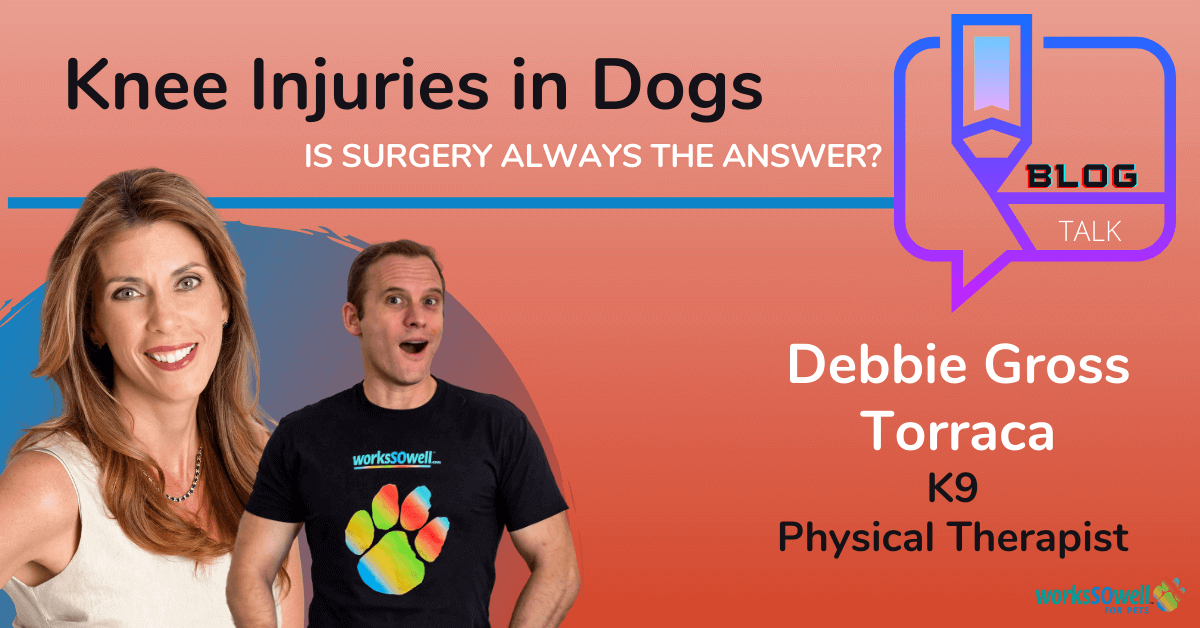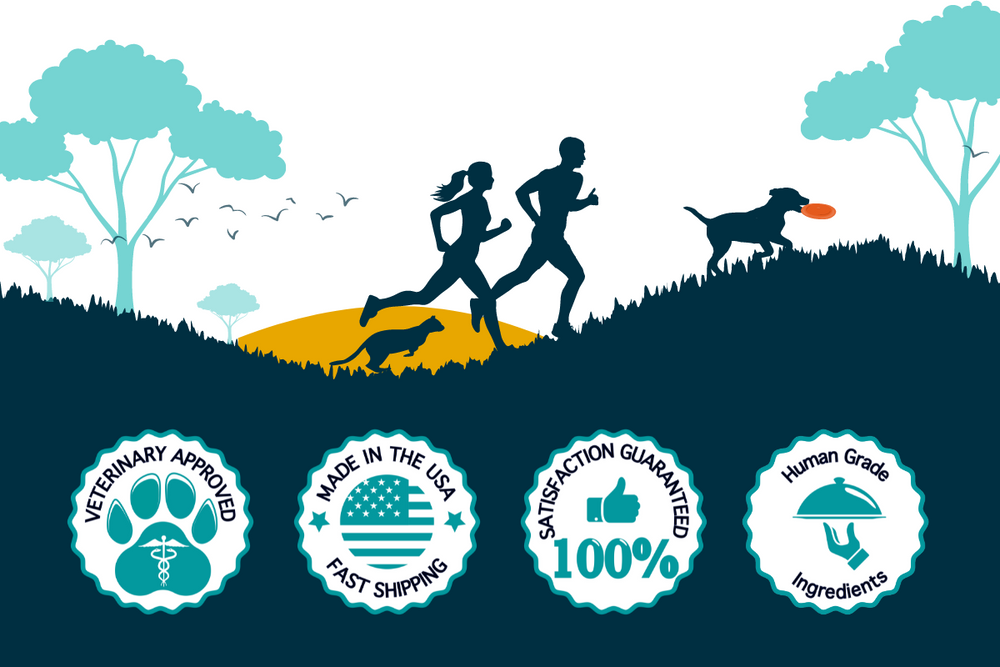How to Protect Your Dog from a Second CCL Tear?
How to Protect Your Dog from a Second CCL Tear? So many of us have gone through CCL tears in our dogs, but did you know that their other knee is now at risk as well?
According to the American College of Veterinary Surgeons, “40-60% of dogs that have CrCLD in one knee will at some future time develop a similar problem in the other knee.” Today, we have with us canine rehabilitation expert Dr. Debra Canapp to learn how to properly prepare and protect your dog from future mishaps.
Watch the Full interview by clicking the image below.
Introduction to Dr. Canapp
Debra Canapp started in canine rehab at the dawn of this industry over 15-20 years ago. Transitioning into a full-time sports medicine and rehabilitation veterinarian was so fulfilling with watching the dogs that are in pain begin to feel good again.
Dog Knee Injuries 101
Knee injuries are the most common injury in dogs. At their clinic, they see nearly 30 knee injuries a week. All dogs are susceptible to a knee injury, but some breeds are more predisposed to it than others.
The most common knee injury is a ruptured CCL (an ACL in a human).
A range of things can cause CCL tears. Freak accidents like tripping over uneven earth could cause it, or if a dog has a significantly increased tibial plateau slope, it can increase the probability of a CCL tear. Certain diseases can also cause inflammation in the body and can also potentially break down ligaments, which can also cause those tears.
This type of tear can take a long time to rehab fully, around three months, but it ultimately causes more anguish in the human owner than the dog.
According to the American College of Veterinary Surgeons, “40-60% of dogs that have CrCLD in one knee will at some future time develop a similar problem in the other knee.” Dr. Canapp agrees with this statistic, as it was reported on in a study in 2009 that examined Labradors.
But that study was done 10 years ago, so Dr. Canapp believes there are several new techniques in place to help lower that number.
When dogs injured their first CCL, surgical correction is typically the standard of care – with injury and surgery comes discomfort, which causes them to place more weight on the other side. In addition, while the dog heals from surgery, they need to build up muscle mass.
If the dog doesn’t have enough muscle mass by the time they are technically healed, they will continue to favor the initially injured side and overweight the other side. If free activity is re-introduced with this scenario, the other leg is going to be over worked which could lead to a ruptured CCL on that side.
- The structures in the opposite knee can’t take additional weight long term, so an inflammatory cascade is initiated. Inflammation will add to break down ligaments. It’s like a race against time to get more weight on the surgical leg that was just repaired, building up muscle mass in that leg, so it can evenly support the dog once they go back to their activity.
To prevent the other side from tearing, the #1 thing Dr. Canapp recommends is to help your dog support their body and hopefully add to preventing the original tear through putting your dog on nutritional supplements. The magical three she recommends are 1TDC, an Omega-3 fatty acid, and a glucosamine chondroitin sulfate.
This combination is recommended for all dogs, especially those who are super active. Even those who are couch potatoes have anatomical challenges, so these supplements will be good for them, too.
Starting these joint supplements before injury, around one year of age, also allows the dogs who do suffer from these injuries potentially heal faster. Ultimately this combination is a good preventative strategy as well as a rehabilitation tactic. This helps support against micro-tears that build up over time with active dogs like agility or hunting dogs.
Depending on the individual dog’s abilities or deficiencies, Dr. Canapp will add other things in as necessary, but she always starts with these three core supplements.
She bases diet recommendations on how the dog feels. While folks want to keep their dog lean, they are times that they may be so lightweight that they don’t have enough fat on them, which gives them reserves or extra energy to heal. For those dogs, she may recommend adding some calories in order to help them gain a small amount of weight but owners need to be careful on how much food they add since their dog would also be doing less exercise.
For those dogs who are overweight, she may recommend a caloric reduction as they are doing less exercise. Preventing extra weight on that other knee is another reason to make these recommendations. They want enough fat to heal the one knee but not too much to stress out the other one.
If your dog does tear their CCL, the first step is to find a surgeon. Before surgery, have a discussion with them as which surgeries or rehab techniques they would recommend specifically for your dog.
Veterinarians/surgeons should look at breed, size, and activity of the patient, all of which impact a dog’s bone structure and helps determines the correct course of action for that specific patient.
It’s super important to get an in-depth discussion about the surgeons’ recommendations or multiple opinions if you are not comfortable with the first one, as the solution for your dog may be different.
Dr. Canapp made a video about how to prevent knee injuries in your dogs (CLICK HERE TO VIEW), including warm-up and cool-down techniques when exercising your dog, and other relevant tips. Check out all the video resources from her educational platform here.
Even if one takes all these precautions, the likelihood of a dog tearing the other side is still present.
When Dr. Canapp saw that 2009 paper, she knew that number did not align with the numbers at her clinic, which she thought maybe it was correlated with the rehabilitation modalities they often used on their patients may be responsible for their lower percentage.
But what she realized was the majority of the dogs that had equal muscle mass at the end of their rehabilitation did not go on to rupture the other CCL. At VOSM, they decreased the percentage of contra-lateral CCL rupture to between 10-25%.
Those who do not end up with equal muscle mass will have a higher chance of rupturing the other side. And of course, there’s always the freak “squirrel” accidents that happen no matter what one does.
The rehabilitation process for post-surgical CCL tears is about 12 weeks long. Restrict activity for the entire 12 weeks in order to let the muscle mass rebuild back to equal to the non-torn side.
Dogs will not build up muscle mass just by walking though, so there are recommended exercises that you as the owner should follow through on doing with your dog in order to build up that muscle mass as scheduled.
Contact Dr. Canapp
● Canapp Sports Medicine on Facebook, Instagram, YouTube
Additional Resources
1-TDC promotes Healthy inflammatory responses and is recommended by Dr. Canapp as one of her top 3 favorite supplement she uses.









